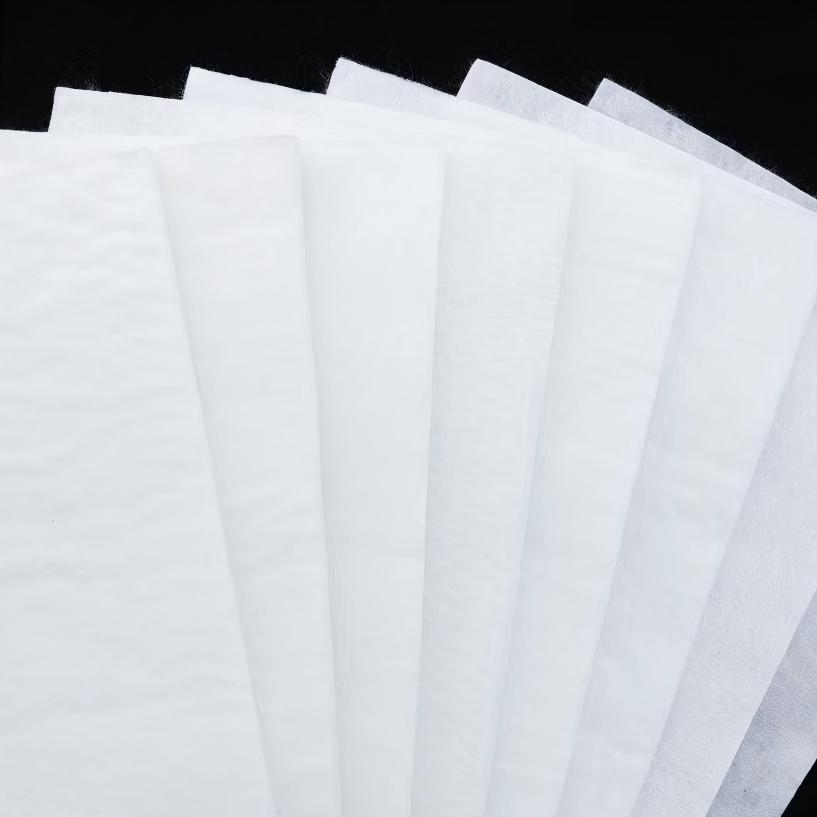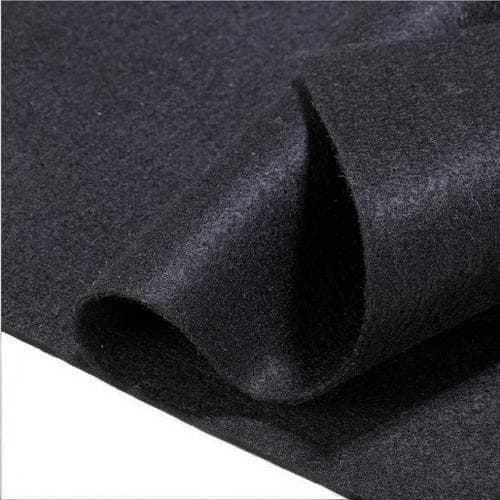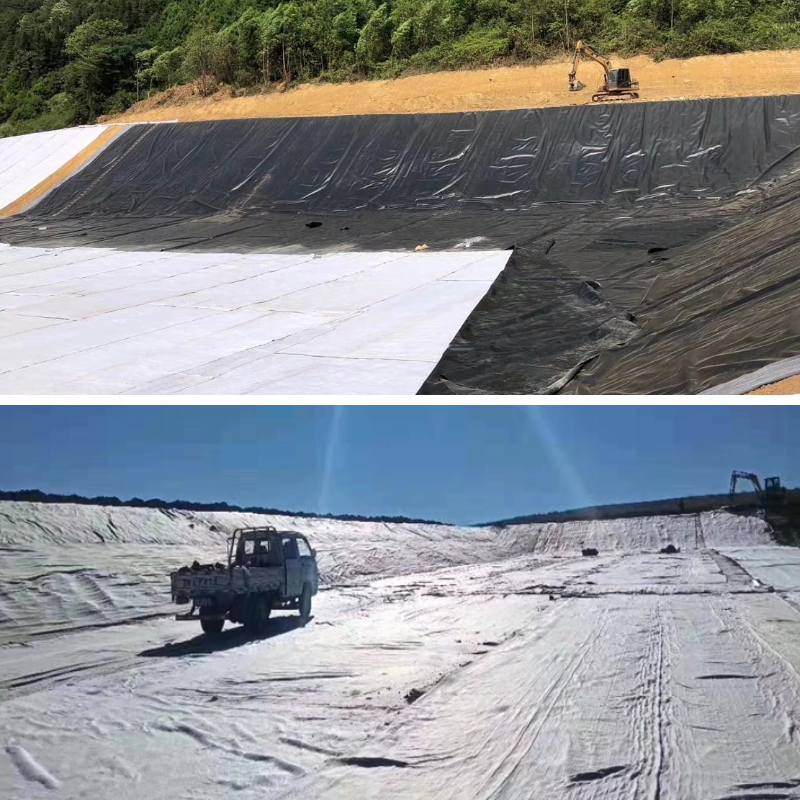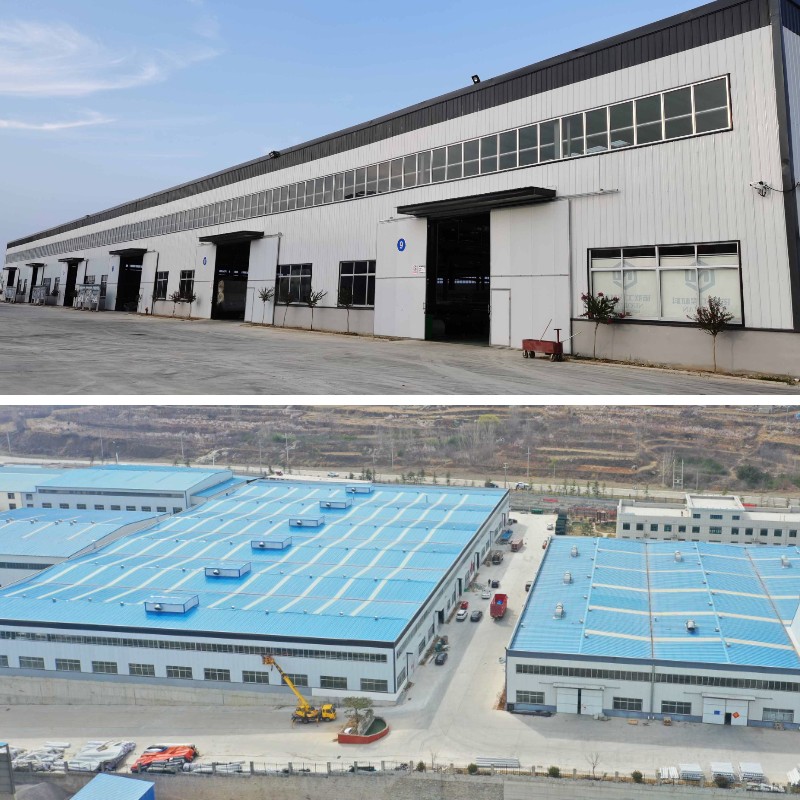Geotextile Fabric Under Concrete Slab
1. Eco-friendly and biodegradable: Contains no chemical additives and naturally degrades after use. This meets the needs of sustainable development and leaves no residual environmental pollution.
2. Stable and protective: Featuring low elongation and minimal deformation under tensile load, it stabilizes the soil. Its high tensile strength effectively resists rain and wind erosion, providing long-lasting protection for slopes, riverbanks, and other areas.
3. Moisturizing and breathable: Its moderate porosity provides excellent air permeability and drainage, preventing water accumulation in the soil. It can also absorb several times its own weight in water to retain moisture, provide a habitat for soil microorganisms, and promote the development of plant roots.
4. Highly cost-effective and adaptable: It meets the protection period before vegetation is established. Its installation is convenient and cost-effective, making it suitable for a variety of applications.
Product Introduction:
Geotextile fabric under concrete slab is a functional geotechnical material designed specifically for protecting the base layer of concrete structures. It is widely used in concrete pouring projects such as residential foundations, road pavements, parking lot hardening, and industrial plant floors. Its excellent isolation, filtration, and protection properties make it a key supporting material for enhancing the stability and service life of concrete structures. It is typically made of high-strength synthetic fibers (such as polyester and polypropylene) through a specialized woven or non-woven process. It combines flexibility with tear resistance, adapting to even the slightest deformation of the base soil. Its strong chemical stability allows it to withstand long-term acid and alkali corrosion in the soil, preventing the adverse effects of material aging and failure on the concrete slab.
Geotextile fabric under concrete slabs is also exceptionally easy to install, requiring no complex specialized tools. It can be flexibly cut to fit the concrete pouring area and laid flat to the base surface, significantly shortening the construction preparation cycle. Furthermore, the product's cost is manageable. Compared to traditional base treatment methods, it can reduce the amount of sand and gravel underlayment, lowering overall project costs. Whether it is the hardening of indoor and outdoor floors of civil buildings, or the concrete paving of municipal roads and storage sites, this product can provide stable base layer protection for concrete structures, helping to improve project quality and long-term durability.
Product Parameters:
project | metric | ||||||||||
Nominal strength/(kN/m) | |||||||||||
6 | 9 | 12 | 18 | 24 | 30 | 36 | 48 | 54 | |||
1 | Longitudinal and transverse tensile strength / (kN/m) ≥ | 6 | 9 | 12 | 18 | 24 | 30 | 36 | 48 | 54 | |
2 | Maximum elongation at maximum load in longitudinal and transverse directions/% | 30~80 | |||||||||
3 | CBR top penetration strength /kN ≥ | 0.9 | 1.6 | 1.9 | 2.9 | 3.9 | 5.3 | 6.4 | 7.9 | 8.5 | |
4 | Longitudinal and transverse tearing strength /kN | 0.15 | 0.22 | 0.29 | 0.43 | 0.57 | 0.71 | 0.83 | 1.1 | 1.25 | |
5 | Equivalent aperture O.90(O95)/mm | 0.05~0.30 | |||||||||
6 | Vertical permeability coefficient/(cm/s) | K× (10-¹~10-), where K=1.0~9.9 | |||||||||
7 | Width deviation rate /% ≥ | -0.5 | |||||||||
8 | Unit area mass deviation rate /% ≥ | -5 | |||||||||
9 | Thickness deviation rate /% ≥ | -10 | |||||||||
10 | Thickness coefficient of variation (CV)/% ≤ | 10 | |||||||||
11 | Dynamic perforation | Puncture hole diameter/mm ≤ | 37 | 33 | 27 | 20 | 17 | 14 | 11 | 9 | 7 |
12 | Longitudinal and transverse fracture strength (grab method)/kN ≥ | 0.3 | 0.5 | 0.7 | 1.1 | 1.4 | 1.9 | 2.4 | 3 | 3.5 | |
13 | Ultraviolet resistance (Xenon arc lamp method) | Longitudinal and transverse strength retention rate% ≥ | 70 | ||||||||
14 | Ultraviolet resistance (fluorescence UV lamp method) | Longitudinal and transverse strength retention rate% ≥ | 80 | ||||||||
Product Applications:
Geotextile Fabric Under Concrete Slab Product Applications:Leveraging its core properties of isolation, filtration, and cushioning, geotextile fabric under concrete slabs precisely meets the base protection requirements of various concrete pouring projects. It is widely used in civil buildings, municipal infrastructure, industrial sites, and special applications, providing critical assurance for the stability and durability of concrete structures. Specific application scenarios are as follows:
1. Civil Construction
This product is a core supporting material for concrete base treatment in ground and foundation projects for residential buildings, villas, and other civil structures. On the one hand, it can be used for indoor and outdoor floor hardening, such as the concrete base layer in living rooms and bedrooms, or beneath concrete paving in courtyards and terraces. It isolates the soil from the concrete slab, preventing cement slurry loss and soil particles from becoming embedded, leading to sanding and cracking in the ground. It also drains water from the base layer, solving the problem of ground dampness during the rainy season. On the other hand, during the construction of residential foundation concrete cushions, it can be laid between the foundation soil and the concrete cushion layer to resist soil acid and alkaline erosion and buffer the impact of minor foundation settlement on the upper concrete structure, ensuring the long-term stability of the residential foundation and reducing potential risks such as wall cracking and ground tilting.
2. Municipal Infrastructure
Municipal projects place extremely high demands on the durability and safety of concrete structures. This product is widely used in roads, parking lots, squares, and other locations. In municipal road construction, this product, placed between the concrete base layer beneath the asphalt pavement and the roadbed soil, isolates the roadbed gravel from the concrete slab, preventing concrete fractures caused by uneven subgrade settlement. It also drains accumulated water from the subgrade, preventing damage to the road structure from freeze-thaw cycles and extending the road's service life. In concrete paving projects in urban parking lots and commercial plazas, it can accommodate large-scale pouring needs. Its isolation and filtration properties reduce concrete slab settlement and heaving caused by long-term vehicle traffic, ensuring site flatness and reducing ongoing maintenance costs.
3. Industrial Sites
Concrete floors in industrial plants, storage centers, logistics parks, and other sites must withstand the high loads of heavy equipment and stacked goods. This product provides reliable base protection. During industrial plant floor construction, it is laid between the concrete slab and the base soil to distribute the localized pressure generated by heavy machinery (such as machine tools and forklifts), preventing the formation of cavities in the base soil due to concentrated loads, and preventing cracking and collapse in the concrete floor. In concrete storage yards and loading and unloading areas of storage centers and logistics parks, it can filter out accumulated water from the base soil, preventing damage from moisture during storage. It also enhances the concrete slab's resistance to deformation, adapting to the long-term wear and tear of the floor caused by frequent loading and unloading operations.
4. Special Applications
In addition to conventional applications, this product can also meet the needs of certain specialized concrete projects. During the construction of concrete slabs in underground garages and basements, it is laid between the slab and the underground soil layer, which can isolate groundwater from the concrete structure, prevent groundwater infiltration and leakage of the slab, and at the same time buffer the impact of underground soil settlement on the slab; in the concrete hardening projects of rural roads and farmland irrigation channels, considering the poor conditions of the base soil, this product can reduce the amount of sand and gravel cushion layer and reduce construction costs. At the same time, through isolation and protection, it ensures that the concrete structures of rural roads and irrigation channels are stable and durable in complex soil environments.
Geotextiles beneath concrete slabs rely on three core functions: isolation, filtration, and buffering. They help stabilize the structure and extend the lifespan of various concrete projects. They are commonly used in four scenarios:
Civil Construction: Laid on the floors or foundations of residential buildings and villas, they prevent cement slurry waste, ground sanding and cracking, address moisture resorption, and provide resistance to soil acidity and alkalinity, reducing wall cracking and ground tilting.Municipal Engineering: Used on municipal roads, parking lots, and plazas, they prevent road subgrade fractures caused by subgrade settlement, resist freeze-thaw cycles, and reduce ground settlement and heaving in parking lots, lowering maintenance costs.Industrial Sites: Used in factories, warehouses, and logistics parks, they distribute the pressure of heavy equipment, prevent ground collapse, drain accumulated water, and prevent moisture resorption, adapting to frequent operational wear and tear.Special Applications: Laid on underground garage floors, they prevent groundwater seepage and buffer soil subsidence. Used on rural roads and irrigation channels, they save sand and gravel, reduce costs, and ensure the durability of concrete.












